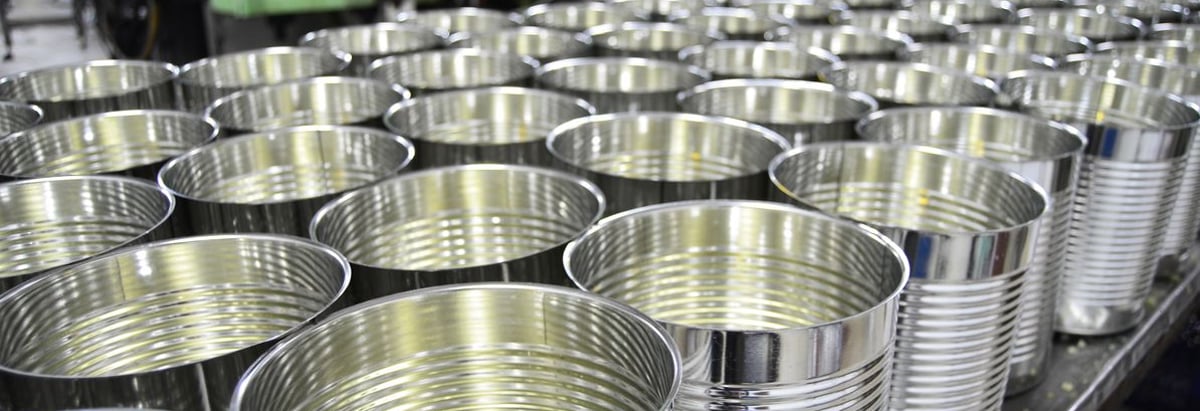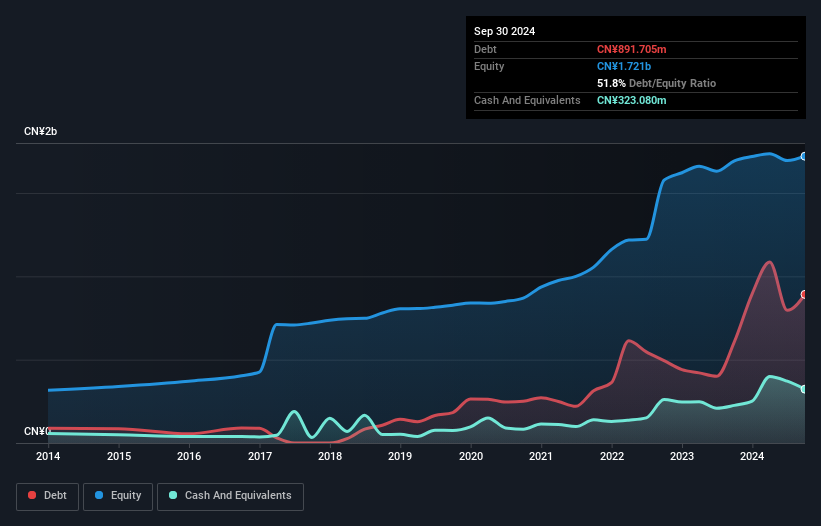- China
- /
- Metals and Mining
- /
- SZSE:002824
Is Guangdong Hoshion Industrial Aluminium (SZSE:002824) A Risky Investment?

Some say volatility, rather than debt, is the best way to think about risk as an investor, but Warren Buffett famously said that 'Volatility is far from synonymous with risk.' So it might be obvious that you need to consider debt, when you think about how risky any given stock is, because too much debt can sink a company. We can see that Guangdong Hoshion Industrial Aluminium Co., Ltd. (SZSE:002824) does use debt in its business. But is this debt a concern to shareholders?
What Risk Does Debt Bring?
Debt is a tool to help businesses grow, but if a business is incapable of paying off its lenders, then it exists at their mercy. In the worst case scenario, a company can go bankrupt if it cannot pay its creditors. However, a more frequent (but still costly) occurrence is where a company must issue shares at bargain-basement prices, permanently diluting shareholders, just to shore up its balance sheet. Of course, the upside of debt is that it often represents cheap capital, especially when it replaces dilution in a company with the ability to reinvest at high rates of return. The first thing to do when considering how much debt a business uses is to look at its cash and debt together.
View our latest analysis for Guangdong Hoshion Industrial Aluminium
What Is Guangdong Hoshion Industrial Aluminium's Debt?
The image below, which you can click on for greater detail, shows that at September 2024 Guangdong Hoshion Industrial Aluminium had debt of CN¥891.7m, up from CN¥607.9m in one year. On the flip side, it has CN¥323.1m in cash leading to net debt of about CN¥568.6m.

How Strong Is Guangdong Hoshion Industrial Aluminium's Balance Sheet?
The latest balance sheet data shows that Guangdong Hoshion Industrial Aluminium had liabilities of CN¥1.15b due within a year, and liabilities of CN¥753.2m falling due after that. Offsetting these obligations, it had cash of CN¥323.1m as well as receivables valued at CN¥1.19b due within 12 months. So its liabilities outweigh the sum of its cash and (near-term) receivables by CN¥390.8m.
Given Guangdong Hoshion Industrial Aluminium has a market capitalization of CN¥5.35b, it's hard to believe these liabilities pose much threat. However, we do think it is worth keeping an eye on its balance sheet strength, as it may change over time.
We measure a company's debt load relative to its earnings power by looking at its net debt divided by its earnings before interest, tax, depreciation, and amortization (EBITDA) and by calculating how easily its earnings before interest and tax (EBIT) cover its interest expense (interest cover). The advantage of this approach is that we take into account both the absolute quantum of debt (with net debt to EBITDA) and the actual interest expenses associated with that debt (with its interest cover ratio).
Guangdong Hoshion Industrial Aluminium has a debt to EBITDA ratio of 2.8 and its EBIT covered its interest expense 4.6 times. Taken together this implies that, while we wouldn't want to see debt levels rise, we think it can handle its current leverage. Importantly, Guangdong Hoshion Industrial Aluminium's EBIT fell a jaw-dropping 51% in the last twelve months. If that earnings trend continues then paying off its debt will be about as easy as herding cats on to a roller coaster. The balance sheet is clearly the area to focus on when you are analysing debt. But it is future earnings, more than anything, that will determine Guangdong Hoshion Industrial Aluminium's ability to maintain a healthy balance sheet going forward. So if you want to see what the professionals think, you might find this free report on analyst profit forecasts to be interesting.
Finally, while the tax-man may adore accounting profits, lenders only accept cold hard cash. So it's worth checking how much of that EBIT is backed by free cash flow. Over the last three years, Guangdong Hoshion Industrial Aluminium saw substantial negative free cash flow, in total. While investors are no doubt expecting a reversal of that situation in due course, it clearly does mean its use of debt is more risky.
Our View
On the face of it, Guangdong Hoshion Industrial Aluminium's conversion of EBIT to free cash flow left us tentative about the stock, and its EBIT growth rate was no more enticing than the one empty restaurant on the busiest night of the year. But on the bright side, its level of total liabilities is a good sign, and makes us more optimistic. Looking at the bigger picture, it seems clear to us that Guangdong Hoshion Industrial Aluminium's use of debt is creating risks for the company. If everything goes well that may pay off but the downside of this debt is a greater risk of permanent losses. When analysing debt levels, the balance sheet is the obvious place to start. However, not all investment risk resides within the balance sheet - far from it. Be aware that Guangdong Hoshion Industrial Aluminium is showing 2 warning signs in our investment analysis , you should know about...
At the end of the day, it's often better to focus on companies that are free from net debt. You can access our special list of such companies (all with a track record of profit growth). It's free.
New: Manage All Your Stock Portfolios in One Place
We've created the ultimate portfolio companion for stock investors, and it's free.
• Connect an unlimited number of Portfolios and see your total in one currency
• Be alerted to new Warning Signs or Risks via email or mobile
• Track the Fair Value of your stocks
Have feedback on this article? Concerned about the content? Get in touch with us directly. Alternatively, email editorial-team (at) simplywallst.com.
This article by Simply Wall St is general in nature. We provide commentary based on historical data and analyst forecasts only using an unbiased methodology and our articles are not intended to be financial advice. It does not constitute a recommendation to buy or sell any stock, and does not take account of your objectives, or your financial situation. We aim to bring you long-term focused analysis driven by fundamental data. Note that our analysis may not factor in the latest price-sensitive company announcements or qualitative material. Simply Wall St has no position in any stocks mentioned.
About SZSE:002824
Guangdong Hoshion Industrial Aluminium
Guangdong Hoshion Industrial Aluminium Co., Ltd.
Excellent balance sheet with limited growth.
Market Insights
Community Narratives




